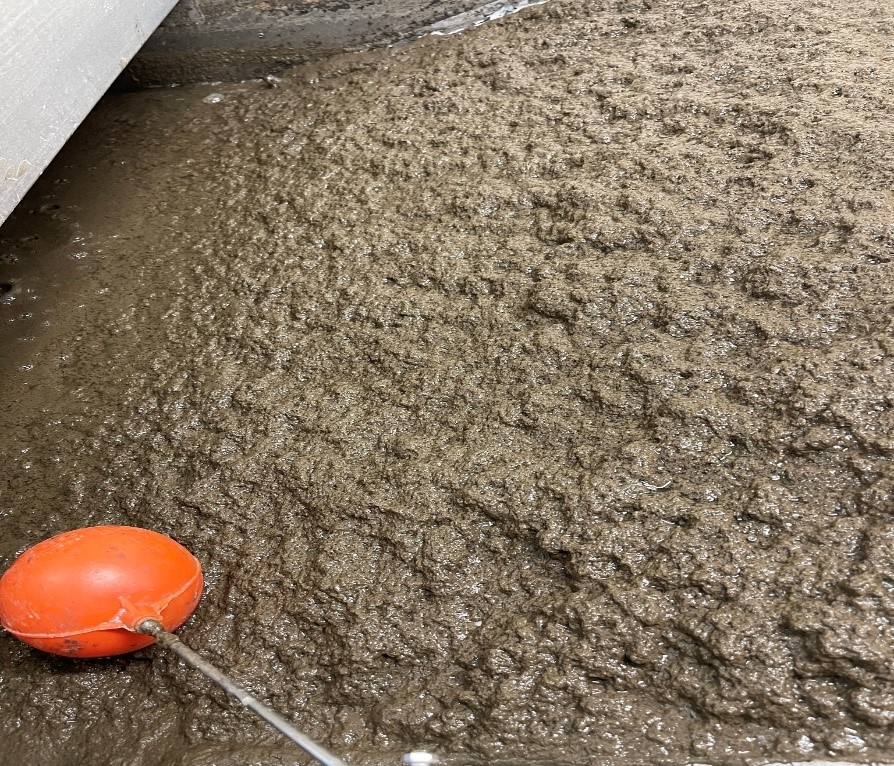

PIRAT-Systems: trials in the pilot plant completed
- The pilot plan investigated phosphorus recovery from excess sludge
- Up to 60% of phosphorus present in the sludge could be recovered as recyclate
- The product of the procedure consisted predominantly of magnesium-ammonium-phosphate (struvite), a mineral fertiliser containing phosphate
The consumption of geogenic phosphorus resources by intensive agriculture causes considerable environmental damage, political dependencies and a critical shortage of this essential raw material. Phosphorus is an important base material for fertiliser production. It is listed as a critical raw material in the EU and even in China, which has large quantities of phosphate-bearing rocks, phosphorus was already identified in 2001 as one of the most important 20 minerals for which the fulfilment of demand is seen as critical.
Therefore, the closing of material cycles through the recovery of phosphorus from sludge in the form of recycling fertilisers that are well available to plants, like magnesium-ammonium-phosphate (map or struvite), gets in the focus of urban water management and political interests. However, in Germany invented procedures often are not implementable on Chinese general conditions. One of the reasons is, that an anaerobic sludge treatment or sludge mono-incineration is rarely performed, which influences the recovery process. Thus, the project PIRAT-Systems aimed to modify the Stuttgarter-procedure, which was invented for the phosphorus recovery from sludge, in a way that ensured a high and stable phosphorus recovery also under the use of primary and excess sludge. This is especially important for countries like China where many sewage plants do not have anaerobic sludge treatment.
Based on the considerations and pre-tests in the laboratory a pilot plant for phosphorus recovery in cooperation with the project partner LUG Engineering Ltd. and the Kaiserslautern University of Technology (TUK) planned by the Umtec Silo and bulk material Ltd. was built. This pilot plant was run by employees of the TUK on the sewage plant Landstuhl aiming to test out the, in the laboratory successful, strategies in a half-technical scale under the real conditions of a sewage plant. Thereby, possible operational problems and challenges in technical implementation became visible.
The pilot plant [see image 1] consisted of two containers with two reactors, an inclined filter for solid-liquid separation (FFT), four compressed air pumps and four dosing pumps for the dosing of required chemicals. In reactor 1, with a capacity of 1000 litres, the phosphorus recovery is performed to set the chemically and biologically bound phosphorus free from the sludge. After the solid-liquid separation through the inclined filter the solids are cut from the system [see image 2] and the filtrate is transferred to reactor 2 where interfering cations such as iron are complexed by the addition of citric acid. After adding magnesium, ammonium and caustic soda, map/struvite crystals can be formed.
On pilot scale up to 70% of phosphorus recovery from thickened ÜSS (TS≈ 3%) were achieved, which corresponded with the laboratory results. A challenge in sludge treatment with a high solid content is the solid-liquid separation. The chemical resolution degrades the filterability of the sludge significantly and initially took a lot of time. By adding suitable polymers and using different filter fleeces, the quality and quantity of the filtrate and the filtration time was reduced in the course of the test. Furthermore, it was shown that the agitation speed is significant for the precipitation of the product and that the quality of the filtrate influences the product composition. The analysis results of the product from the pilot plant show, that with suitable operating settings, the product predominantly consists of struvite. Nevertheless, other components such as iron or calcium compounds are present in smaller portions. The analysis shows as well a very small amount of heavy metals in the product. In the pilot test up to 90% phosphate precipitation related to re-dissolved phosphate and 60% related to phosphorus in the feed of the pilot plant could be achieved.
The trials were finished in July.



